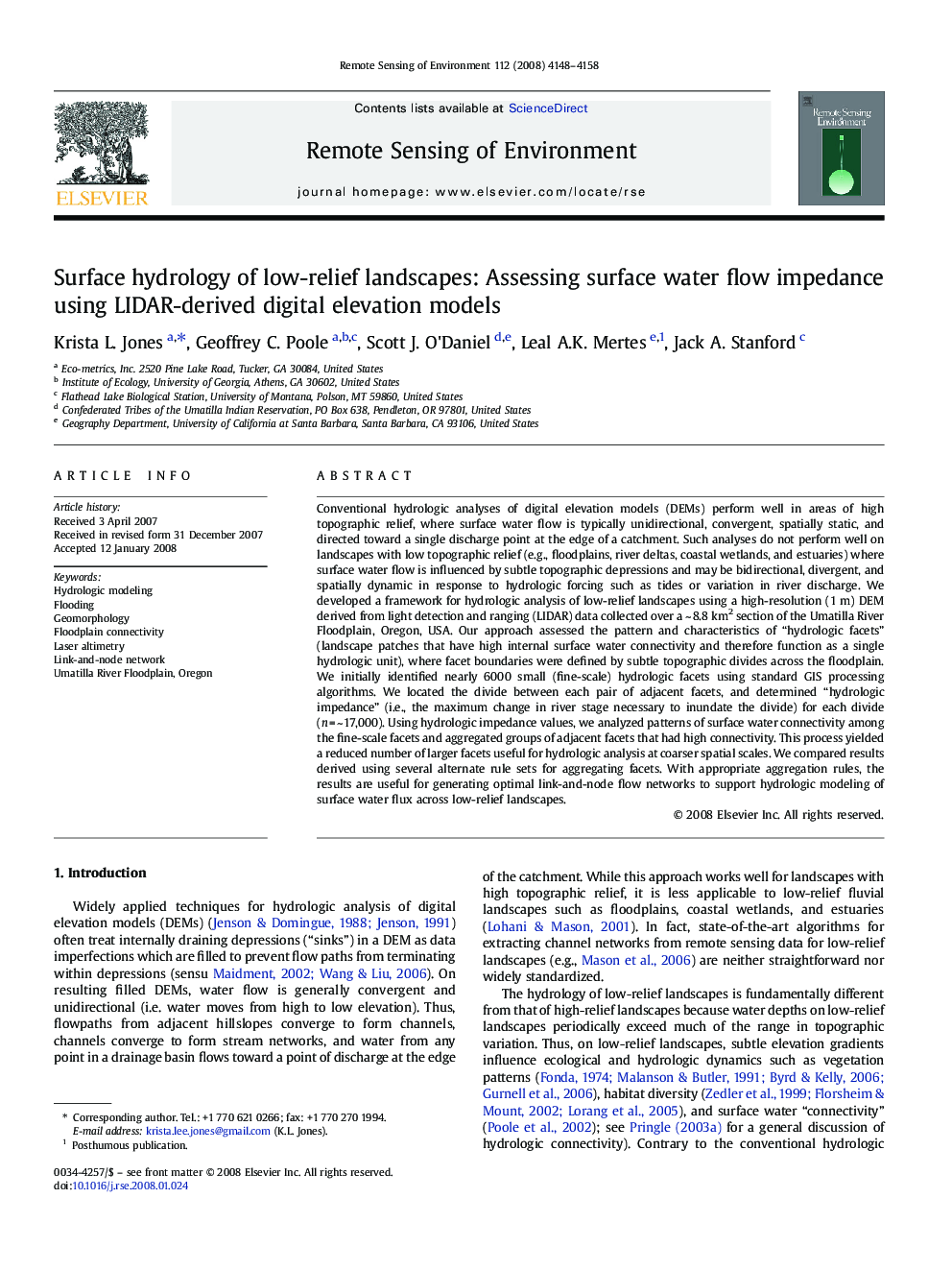| کد مقاله | کد نشریه | سال انتشار | مقاله انگلیسی | نسخه تمام متن |
|---|---|---|---|---|
| 4460499 | 1621323 | 2008 | 11 صفحه PDF | دانلود رایگان |

Conventional hydrologic analyses of digital elevation models (DEMs) perform well in areas of high topographic relief, where surface water flow is typically unidirectional, convergent, spatially static, and directed toward a single discharge point at the edge of a catchment. Such analyses do not perform well on landscapes with low topographic relief (e.g., floodplains, river deltas, coastal wetlands, and estuaries) where surface water flow is influenced by subtle topographic depressions and may be bidirectional, divergent, and spatially dynamic in response to hydrologic forcing such as tides or variation in river discharge. We developed a framework for hydrologic analysis of low-relief landscapes using a high-resolution (1 m) DEM derived from light detection and ranging (LIDAR) data collected over a ~ 8.8 km2 section of the Umatilla River Floodplain, Oregon, USA. Our approach assessed the pattern and characteristics of “hydrologic facets” (landscape patches that have high internal surface water connectivity and therefore function as a single hydrologic unit), where facet boundaries were defined by subtle topographic divides across the floodplain. We initially identified nearly 6000 small (fine-scale) hydrologic facets using standard GIS processing algorithms. We located the divide between each pair of adjacent facets, and determined “hydrologic impedance” (i.e., the maximum change in river stage necessary to inundate the divide) for each divide (n = ~ 17,000). Using hydrologic impedance values, we analyzed patterns of surface water connectivity among the fine-scale facets and aggregated groups of adjacent facets that had high connectivity. This process yielded a reduced number of larger facets useful for hydrologic analysis at coarser spatial scales. We compared results derived using several alternate rule sets for aggregating facets. With appropriate aggregation rules, the results are useful for generating optimal link-and-node flow networks to support hydrologic modeling of surface water flux across low-relief landscapes.
Journal: Remote Sensing of Environment - Volume 112, Issue 11, 15 November 2008, Pages 4148–4158